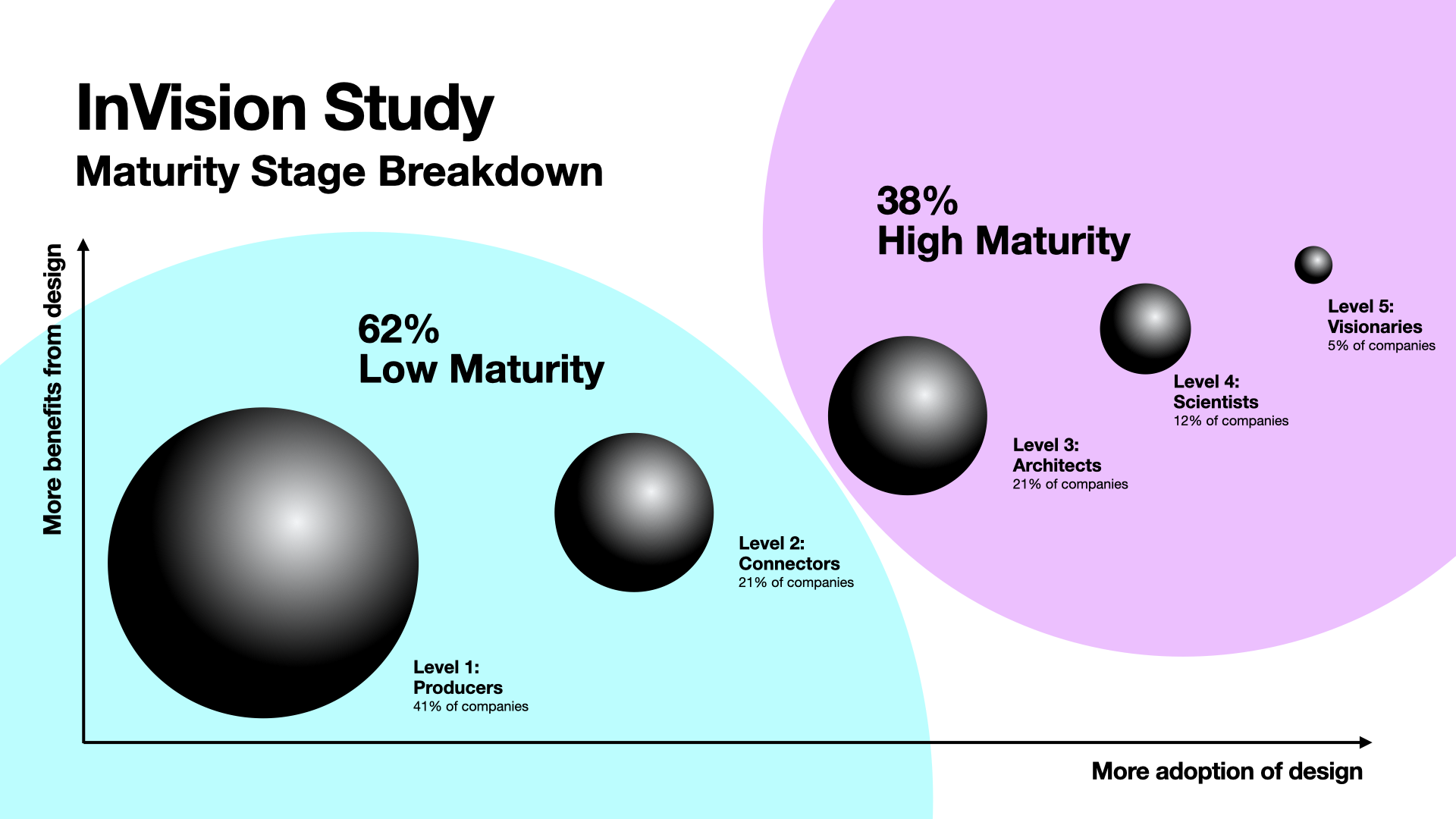Understanding Design Maturity
Design maturity refers to the extent that design is integrated into an organization’s culture, processes, and decision-making. It's about aligning design practices with user needs and business goals to create products that are both functional and delightful. While aesthetics plays a role, good design focuses on solving real problems for users, driving innovation, and contributing to the organization's bottom line.
To evaluate an organization’s design maturity, we can turn to frameworks like the UX maturity model from the Nielsen Norman Group. This model outlines six stages of design maturity, ranging from "Absent," where design is an afterthought, to "Integrated and Optimizing," where design is a core strategic driver. At the lower end of the spectrum, design efforts are disjointed, and decisions are often made without user feedback. As organizations climb the maturity ladder, design becomes more user-centric, data-driven, and integral to business strategy.
Nurturing Design Maturity
Achieving high levels of design maturity requires more than just hiring skilled designers. It calls for a fundamental shift in how an organization perceives and utilizes design. This needs to start at the top, with leadership recognizing the value of design and advocating for it across all levels of the organization. Everyone from designers to project teams to leadership must understand the value of design and its impact on product success.
According to a study by InVision, only a small percentage of companies have reached the highest levels of design maturity. This gap presents a significant opportunity for organizations willing to invest in design maturity. By integrating design into strategic decision-making, companies can unlock new levels of creativity, efficiency, and impact.
Key activities for fostering design growth include incorporating user research, collaboration, and experimentation into the design process. Design should be cohesively integrated into the product development lifecycle, emphasizing consistency, scalability, and data-driven decision-making. Empowering teams and actively involving executives in the design process are critical to advancing towards higher levels of maturity.
Ultimately, organizations can no longer afford to treat design as an afterthought. By embracing a holistic approach to design, organizations can create products that not only meet user needs but also drive business growth and innovation. As you continue your journey toward design maturity, remember it's a long-term investment. Now is the time to elevate your design from a tactical function to a strategic advantage that can propel your organization to new heights. Ready to get started? Connect with us today!






